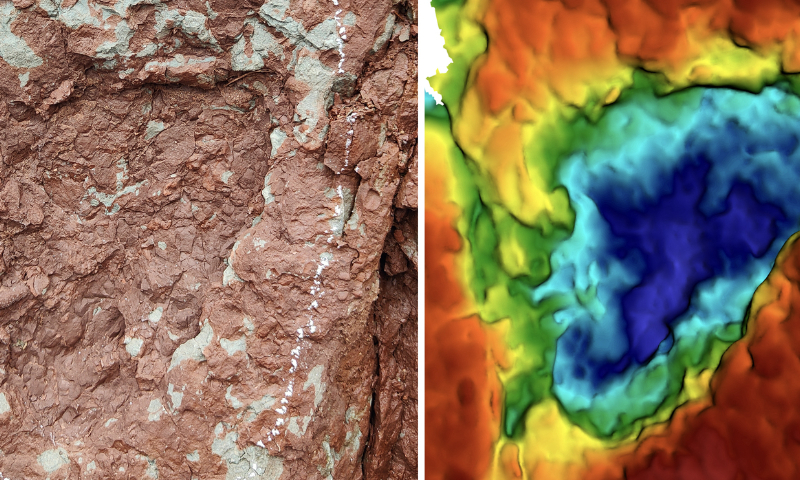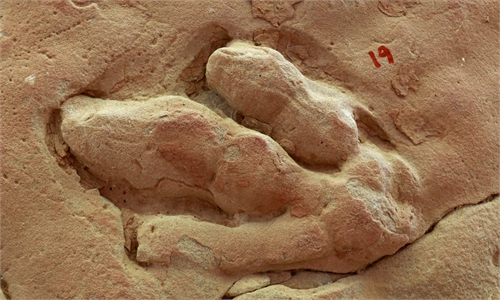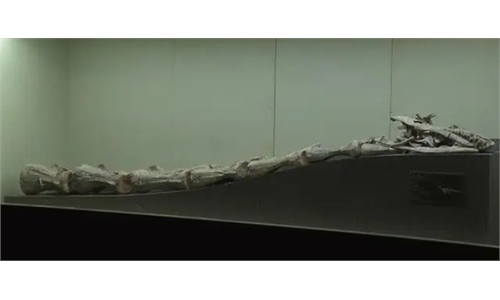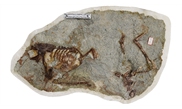
The world’s smallest sauropod dinosaur tracks were discovered in Southwest China's Xizang Autonomous Region. Photo: Courtesy of the China University of Geosciences.
The world's smallest sauropod dinosaur tracks were discovered in Southwest China's Xizang Autonomous Region recently, shedding light on saurischian distribution near the ancient eastern Tethys Ocean, Chinese dinosaur expert Xing Lida from the China University of Geosciences told the Global Times on Friday.
An expedition team discovered two tracksites in the region, one of which contains small, isolated sauropod footprints identified as belonging to the cf. Parabrontopodus isp. These footprints, measuring between 8.8 cm and 15.5 cm in length, are believed to have been made by at least six different dinosaurs.
"Such tiny sauropod tracks are extremely rare. These are comparable in size to the smallest sauropod tracks ever recorded, and the trackmakers are estimated to have been 2-3 meters long," Xing said.
Previous records from Cretaceous deposits in South Korea include tracks measuring 12.2 cm, while early Cretaceous deposits in North China's Inner Mongolia Autonomous Region, have documented footprints ranging from 11.5 to 13 cm. The new discovery in Xizang Autonomous Region sets a new lower limit for sauropod track size.
Xing noted that the newly discovered fossil evidence further supports the previous hypothesis that the dinosaurs of the Middle Jurassic period in Southwest China's eastern region, part of the ancient Tethys Ocean, were predominantly saurischian dinosaurs.
The other tracksite discovered by the expedition team includes footprints from early sauropods and theropods. One of the tracks, consisting of three consecutive large theropod footprints, each about 42 cm in length, constitutes a distinct trackway. Based on its morphological features, the tracks can be classified as belonging to the morpho family Eubrontidae.
"Although Eubrontidae tracks are quite common in China's Mesozoic dinosaur fossil record, they are relatively rare in the Jurassic dinosaur records of Xizang Autonomous Region. Their presence indicates the existence of moderate-sized theropod dinosaurs, which could have been up to 6 meters long," Xing explained.
The dinosaur fossils were found in the Middle Jurassic Dongdaqiao Formation, dating back approximately 166 to 170 million years. This formation also contains plant fossils, trace fossils, and a small number of brachiopods, ostracods, and crinoid stems, suggesting a mixed marine-terrestrial environment.
"Favorable environmental conditions and abundant water resources attracted dinosaurs to this area, leaving behind a wealth of track fossils," Xing noted, adding that as studies progress, dinosaurs from the region are expected to play a significant role in both scientific research and public education.



